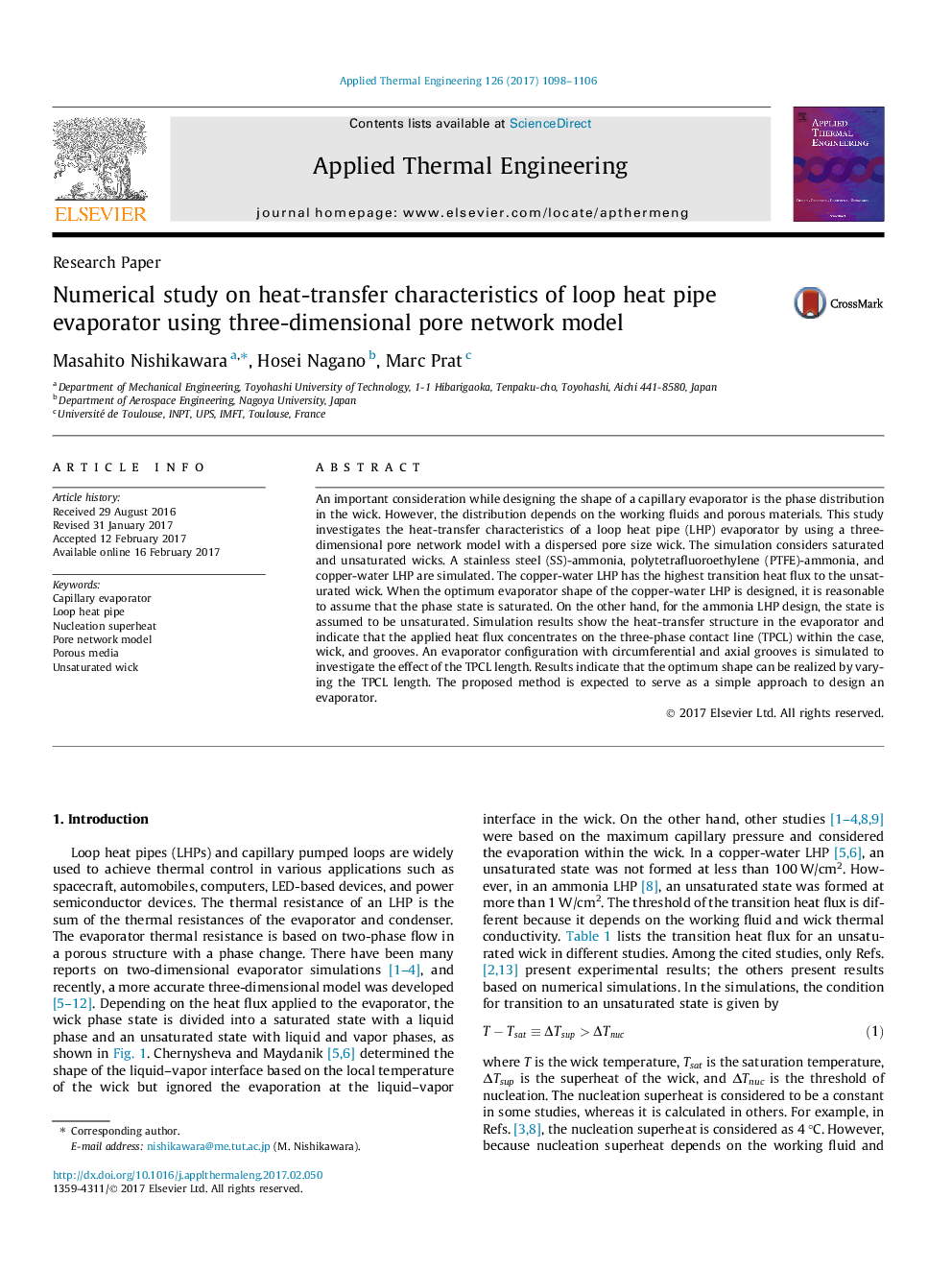| کد مقاله | کد نشریه | سال انتشار | مقاله انگلیسی | نسخه تمام متن |
|---|---|---|---|---|
| 4990394 | 1457103 | 2017 | 9 صفحه PDF | دانلود رایگان |
عنوان انگلیسی مقاله ISI
Numerical study on heat-transfer characteristics of loop heat pipe evaporator using three-dimensional pore network model
ترجمه فارسی عنوان
بررسی عددی ویژگی های حرارتی تبخیر کننده لوله حلقه با استفاده از مدل شبکه سه بعدی سه بعدی
دانلود مقاله + سفارش ترجمه
دانلود مقاله ISI انگلیسی
رایگان برای ایرانیان
کلمات کلیدی
اواپراتور مویرگی، حلقه لوله حرارتی، سرمازدگی هسته ای، مدل شبکه پور رسانه های متخلخل، جگر غیر اشباع،
موضوعات مرتبط
مهندسی و علوم پایه
مهندسی شیمی
جریان سیال و فرایندهای انتقال
چکیده انگلیسی
An important consideration while designing the shape of a capillary evaporator is the phase distribution in the wick. However, the distribution depends on the working fluids and porous materials. This study investigates the heat-transfer characteristics of a loop heat pipe (LHP) evaporator by using a three-dimensional pore network model with a dispersed pore size wick. The simulation considers saturated and unsaturated wicks. A stainless steel (SS)-ammonia, polytetrafluoroethylene (PTFE)-ammonia, and copper-water LHP are simulated. The copper-water LHP has the highest transition heat flux to the unsaturated wick. When the optimum evaporator shape of the copper-water LHP is designed, it is reasonable to assume that the phase state is saturated. On the other hand, for the ammonia LHP design, the state is assumed to be unsaturated. Simulation results show the heat-transfer structure in the evaporator and indicate that the applied heat flux concentrates on the three-phase contact line (TPCL) within the case, wick, and grooves. An evaporator configuration with circumferential and axial grooves is simulated to investigate the effect of the TPCL length. Results indicate that the optimum shape can be realized by varying the TPCL length. The proposed method is expected to serve as a simple approach to design an evaporator.
ناشر
Database: Elsevier - ScienceDirect (ساینس دایرکت)
Journal: Applied Thermal Engineering - Volume 126, 5 November 2017, Pages 1098-1106
Journal: Applied Thermal Engineering - Volume 126, 5 November 2017, Pages 1098-1106
نویسندگان
Masahito Nishikawara, Hosei Nagano, Marc Prat,
